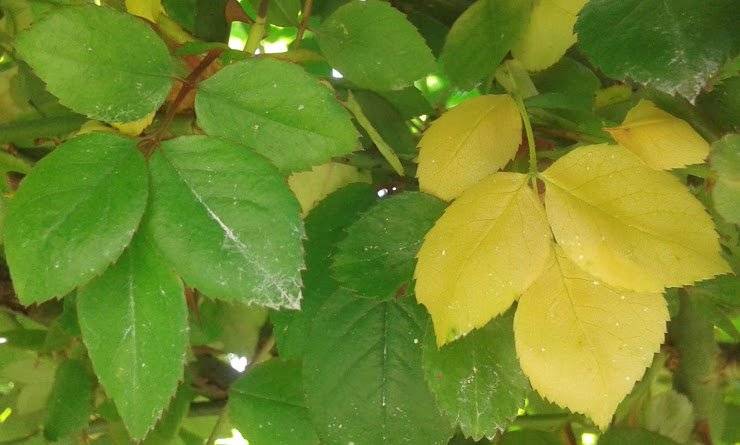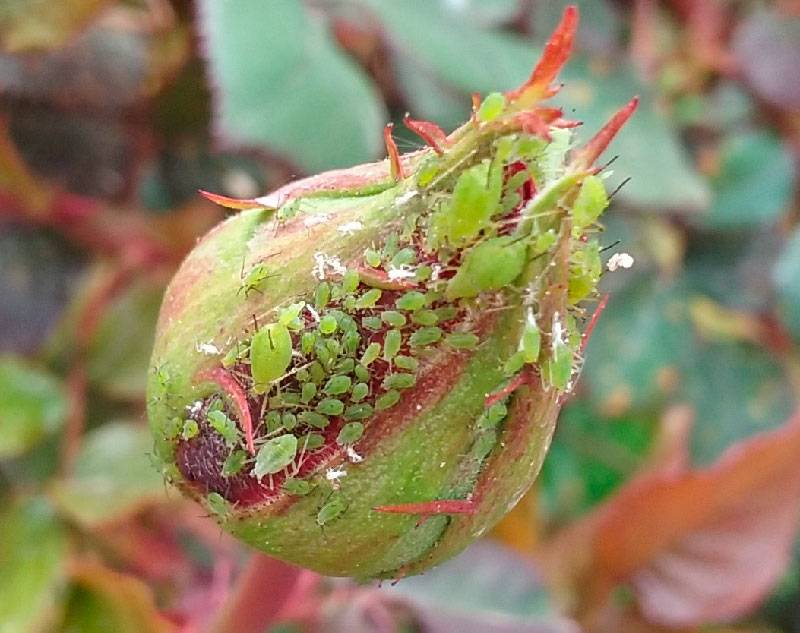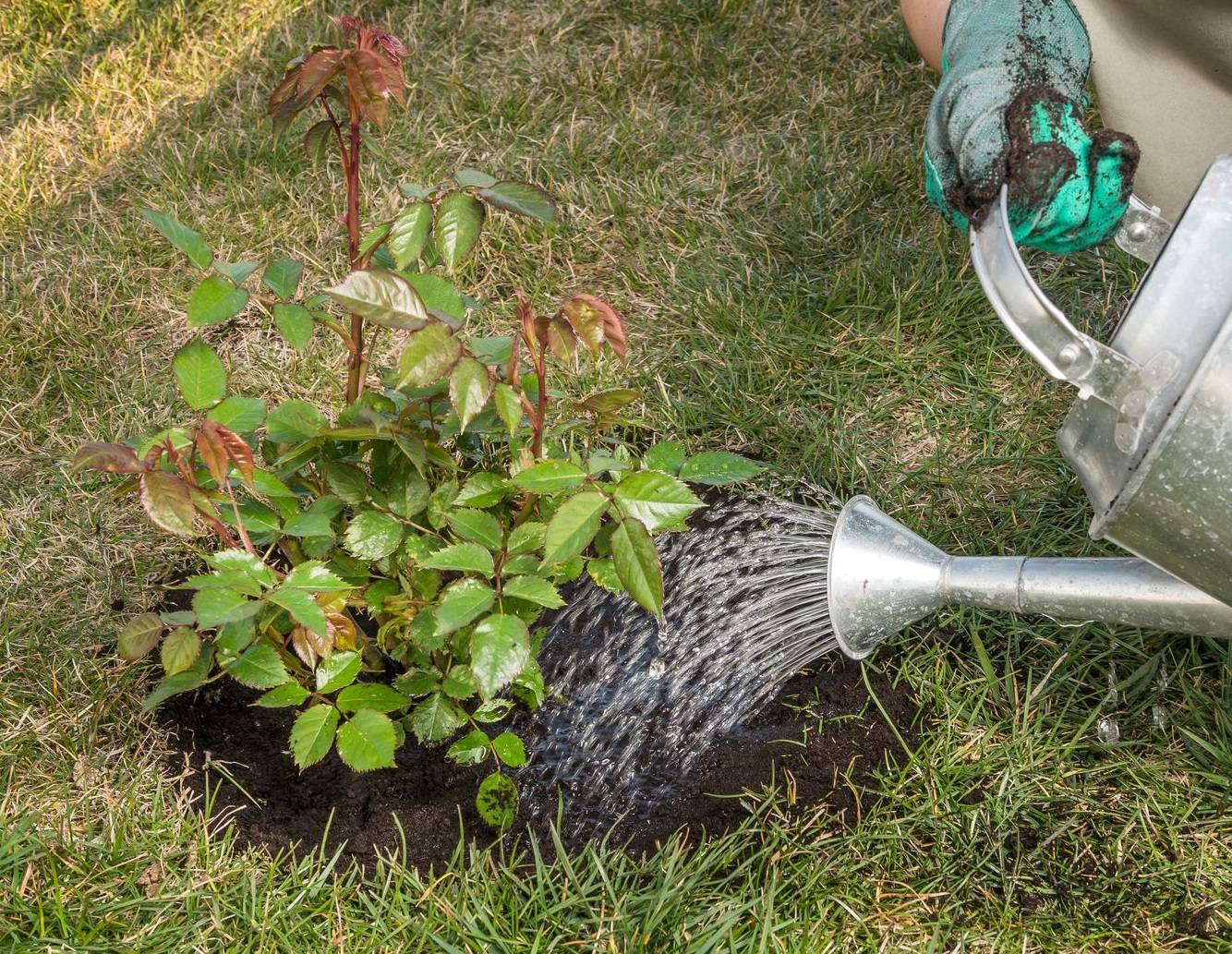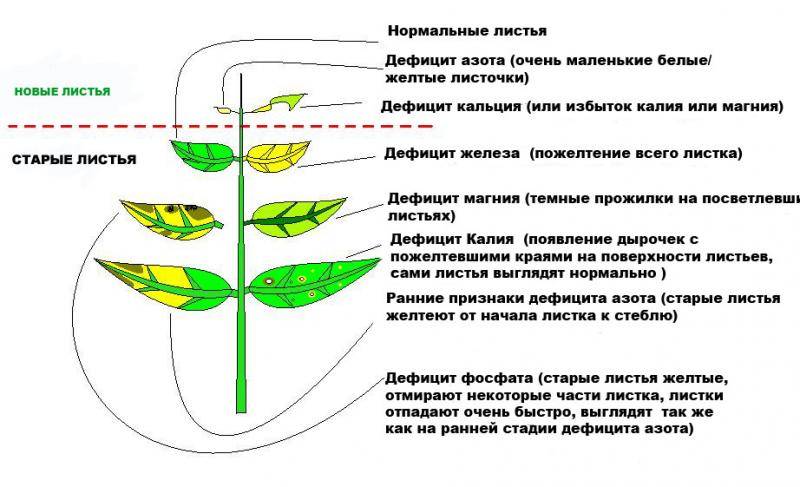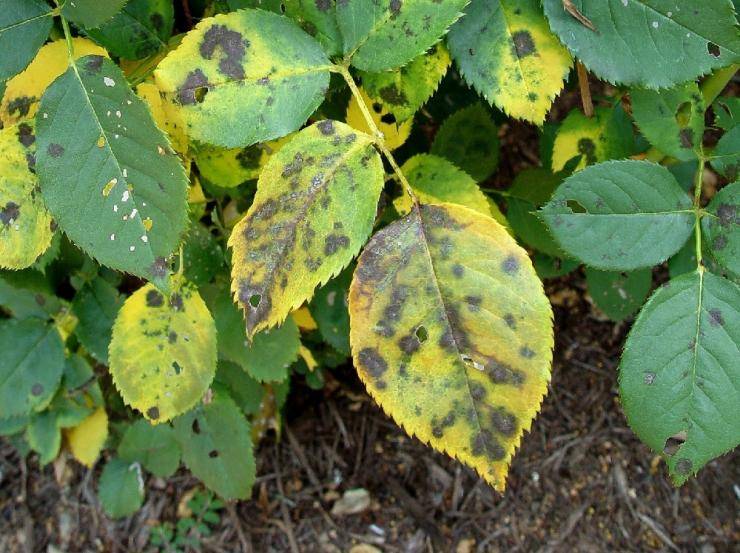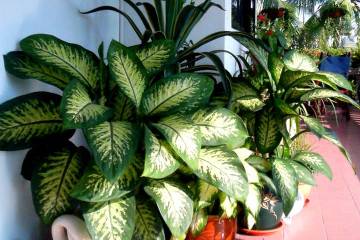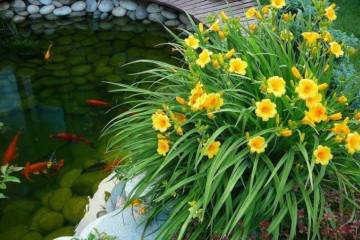Why do roses turn yellow leaves in the summer on the street
Content:
A rose bush blooms magnificently in the garden, but at some point the harmony is broken - the juicy green leaves brighten, dry, crumble. There are many reasons why the leaves of a rose turn yellow. If yellowing occurs in the fall, this is a natural aging process; in the summer, the plant needs urgent help.
The leaves of the garden rose turn yellow
Roses have a special account with flower growers; they are the pride and beauty of a flower bed, a front garden in the country. Culture grows only with close supervision. Yellow foliage is a signal of starvation of the bush or the result of an error in care. The actions of insects and mites also lead to diseases with the subsequent drying of the leaves.
Causes of yellow rose leaves
Roses can turn yellow for reasons beyond the control of the grower. Cloudy weather for long days provokes the formation of a yellow leaf if the crop was originally planted in a shaded place on heavy soils. The bush begins to turn yellow from the lower tier, where less light enters. The owner, if possible, removes interfering objects or overgrowth, but sometimes this is not enough.
More on other reasons.
Diseases and pests
A bright, well-ventilated place is chosen under the rose garden, but without drafts. When the air stagnates, infectious diseases develop:
- black spot. Appears towards the end of the season. First, a brown spot with a yellow border forms on the leaf blade. Further, the disease captures the entire leaf. For a week, the activity of the pathogen fungus takes on large-scale proportions. Spores of a parasitic microorganism hibernate under a bush, so in the spring the land is treated with fungicides topaz, ridomil gold;
- powdery mildew. Viable spores of the fungus remain active in the soil for decades. The infected plant is not capable of photosynthesis, so the leaves turn yellow, the buds become smaller. They are treated with phytosporin-M;
- jaundice. First, the veins brighten, then the entire plate. The virus picks up starch from the plant, the leaves and flowers are deformed. Chemical preparations have not yet been created, therefore, weeds-carriers are destroyed;
- plant bronzing virus. The first signs appear at the tip of the leaves, then the spots surround the chlorotic areas. After 2-3 days, the stems and petioles of the rose are affected. Gardeners use fungicides.
Yellowness is also from pests. The most common:
- spider mite. Small arachnid attacks indoor and garden varieties of roses. Colonies of several hundred individuals settle on the underside of the leaf, forming a thin web. The flower weakens, the plant turns yellow;
- aphid. The sucking insect does not overcome strong bushes, therefore, flower growers first take care of the health of roses. Aphids live where ants are. Their colonies are destroyed with boric acid and sugar. Marigolds, lavender are planted next to roses, since the pest does not tolerate them;
- rose-colored scale insect. Belongs to the category of aphids. It affects greenhouse plants and ornamental crops in the open field.5-6 drops of kerosene or machine oil are added to the soapy solution, the bushes are sprayed. Chemical preparations do not take the scabbard.
Improper care
Roses are moody plants. With magnificent flowering, they respond to proper care. Violation of agricultural technology leads to yellowness and leaf fall:
- soil condition. The culture is planted on light soils with medium acidity, which allow moisture and air to pass through well. Ash and sand are scattered under a bush of garden roses. Dig shallowly to mix the ingredients with the earth. In indoor pots, the earth is completely changed when the plants are transplanted. They make sure that the composition always contains sod soil, peat bog, charcoal;
- drying out of the soil. If the ground under the bush has dried out by 3-5 cm, watering is required. Moisturize early in the morning or evening. At noon, water droplets will work as lenses, leaves and branches can scorch, they will get burned;
- excess moisture. Danger in the development of fungal diseases;
- wrong feeding schedule. The lack of organic and mineral fertilizers or their excess has a deplorable effect on the health of the flower. It will semaphore the yellowed overground part.
Lack of macronutrients
Macronutrients are inorganic chemicals. They are found in plant cells, but get there from outside, they are not synthesized by the body. There are 11 of them in nature.
The most important macronutrients for a rose, without which the leaves turn yellow:
- nitrogen. When the plant lacks this element, the leaf turns pale completely. Reddish spots may appear. Young shoots stop growing and turn yellow. Urea, ammonium nitrate are introduced under the bush. Nitrogen-rich mullein and chicken droppings;
- potassium. The lack of an element gives the effect of an edge burn - the sheet turns brown along the edge, dries up. The middle remains green. The petioles weaken, the plant sheds the leaf prematurely. To prevent this, fertilize with potassium humate, potassium magnesium. Wood ash carries its fraction of the missing element.
Lack of micronutrients
Trace elements are needed by plants in negligible quantities - less than one thousandth of the green mass, but they are also not produced by the body. Without them, the exchange process does not take place, so they are necessary for the rose.
The most significant:
- magnesium. The deficiency is recognized by the central part of the leaf, which becomes yellowish. The edges may still be green. Saves magnesium sulfate;
- iron. Deficiency is becoming the most common cause of yellow leaves. The veins do not lose color. They make up for the shortage with ferovite. Iron vitriol also works, but it is still more fungicide than micronutrient fertilizer;
- manganese. When this substance is lacking, yellowness covers the lower parts of the plant. Plantings must be fed with manganese sulfate.
Micro- and macroelements are replenished with complex fertilizers such as humate.
Varieties of yellowing roses
An experienced florist, by the state of the green part of the plant, will understand why the leaves of a rose turn yellow and fall in summer. Yellowing is different.
The rose quickly turns yellow and leaves fall
This is the job of ticks and sucking insects.They attack the petioles and the leaf blade. You can notice the appearance of a tick by small punctures on the leaf plate. Microscopic moving black dots appear on the back side.
Plant cells are destroyed, the leaves stop participating in photosynthesis, become unviable, and fall off. They fight by means of actellik, neoron.
Another reason is the lack of iron. The element is replenished with complex or special preparations.
Only the lower leaves of the rose turn yellow
Less light falls on the lower tier. Perhaps the bush is very thickened or nearby flowers are blocking the light.
Harmful insects, the larvae of which hibernate under the bush, also begin their activity from below. You can prevent their activity by removing fallen leaves from under the bush in the fall. In the spring, it is worth scattering wood ash over the soil.
The rose leaves turn yellow and curl
It is worth paying attention to the watering regime. Although roses are easier to tolerate drought than waterlogging, a chronic lack of moisture leads to leaf folding. It turns yellow, dries up, curls off the edges.
Yellow spots appeared on the leaves of the rose
Spotting indicates a lack of micro- and macroelements of the bush rose, the appearance of infections, pathogenic organisms. The leaf is spotted unevenly with powdery mildew, magnesium deficiency.
Black spot and jaundice are the scourge of the rosary. Only a systematic struggle brings results.
How to get rid of yellowness on leaves
The phenomenon should not be allowed to take its course. Measures are taken immediately to save the plant and the entire flower garden. Diseases and pests spread rapidly if left unchecked.
A strong, well-developed bush resists attacks from harmful flora. First of all, they take care of the health of the rose.
Important factors in this regard:
- the correct choice of landing site;
- rich, moisture and air permeable soil;
- strong seedlings without signs of disease;
- careful agricultural technology.
A special condition is feeding. In the spring, nitrogen and phosphorus compounds (nitrate, urea) are introduced, in the summer - potassium (potassium sulfate). It is convenient to use complex fertilizers for roses (for example, "Gloria"). Introduce at the root and on the sheet. You can consult in the shops of the agricultural complex.
Long-acting pocon is suitable for lazy flower growers. It is enough to use the product once according to the instructions, and the plant is provided with the necessary nutrition for the entire season.
Traditional methods are welcome, for example, just making an infusion of nettles and other weeds. The grass is poured with water, kept for 7 days, stirring occasionally. A liter of infusion is mixed with a bucket of water, poured under a bush.
The prevention of the appearance of pests is the cleaning of the flower garden from the fallen and dead plant parts. They weed and loosen the ground under the bushes. Traditional Bordeaux liquid and copper sulfate cope well with the treatment of the main types of infectious diseases, serve for pest control. The first time you need to process it in the spring, then they monitor the appearance of unexpected guests.
Also, infusions of garlic and onions, potato tops are used to scare away and destroy insects. In flower shops, contact and systemic fungicides for fungal diseases are purchased: gamair, phytosporin.
If yellow leaves appear on rose bushes in June, growers are looking for the reason. The simplest one might be the lack of water. Yellowing is caused by infectious and fungal diseases, harmful insects, lack of minerals. The leaf is examined, the source is found, and action is taken.Alternative methods are effective, or the necessary chemicals are bought in stores.
